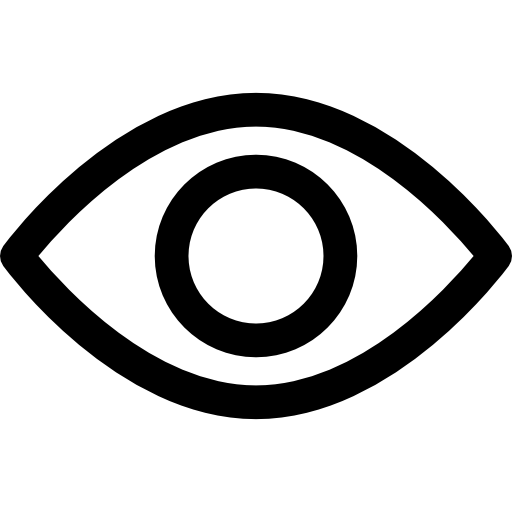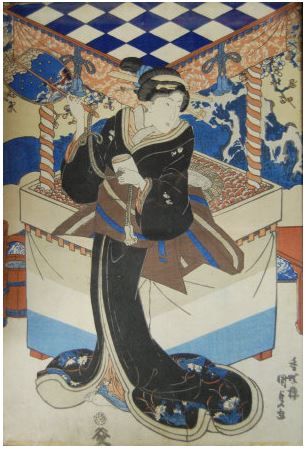Identification and Price guides for Antiques & Collectibles


COLLECTIBLE WOOD BLOCK PRINTS:
A Guide to Japanese Treasures
Join the most updated and complete collectibles research online - Learn more...
 Woodblock printing is a technique that originated in China, but it was the Japanese who developed it into a fine art form during the Edo period (1603-1868). This form of printmaking is highly regarded for its intricate details, vivid colors, and a wide range of subject matter. Japanese woodblock prints, also known as ukiyo-e, have become highly sought after by collectors worldwide. In this article, we will take a closer look at what makes Japanese woodblock prints so collectible and what to look for when buying them.
Woodblock printing is a technique that originated in China, but it was the Japanese who developed it into a fine art form during the Edo period (1603-1868). This form of printmaking is highly regarded for its intricate details, vivid colors, and a wide range of subject matter. Japanese woodblock prints, also known as ukiyo-e, have become highly sought after by collectors worldwide. In this article, we will take a closer look at what makes Japanese woodblock prints so collectible and what to look for when buying them.
What Makes Japanese Woodblock Prints So Collectible?
Japanese woodblock prints are highly collectible due to their aesthetic appeal and historical significance. The prints depict a variety of subjects, including landscapes, portraits, and scenes from everyday life. They also provide a unique glimpse into Japanese culture, social customs, and history.
Many Japanese woodblock prints were produced during the Edo period (1603-1868), a time of relative peace and prosperity in Japan. This period saw the rise of the ukiyo-e movement, which celebrated the pleasures and diversions of everyday life. The prints were popular with the urban middle class, who enjoyed the images of beautiful courtesans, actors, and landscapes. The prints were also used to promote Kabuki theater performances and to advertise products.
In addition to their historical significance, Japanese woodblock prints are highly regarded for their technical skill and artistic merit. The prints were created by a team of artisans, including the artist who designed the image, the carver who carved the image into a wooden block, and the printer who inked and printed the image onto paper. The process required precision, skill, and patience, resulting in prints of exceptional quality.
What to Look for When Buying Japanese Woodblock Prints
If you are interested in collecting Japanese woodblock prints, there are several things to keep in mind. Here are some tips to help you make informed buying decisions:
- Condition: Look for prints that are in good condition, with no tears, stains, or fading. Prints that have been well-preserved will hold their value better than those that are damaged.
- Provenance: Consider the print's history, including who owned it previously and where it was acquired. Prints with a documented history may be more valuable than those with an unknown provenance.
- Authenticity: Look for prints that are signed and sealed by the artist, as well as those that have a publisher's seal. The absence of these marks may indicate that the print is a reproduction or a later edition.
- Rarity: Consider the rarity of the print, as well as its subject matter. Prints that are rare and highly sought after will command a higher price.
- Age: Consider the age of the print, as well as the edition it belongs to. Earlier editions are generally more valuable than later editions.
Types of Japanese Woodblock Prints
Japanese woodblock prints can be divided into several categories, based on their subject matter and style. Here are some of the most common types:
Landscapes
Landscapes were a popular subject for Japanese woodblock prints. The prints often depicted famous landmarks, such as Mount Fuji or the Tokaido road. The landscapes were often highly stylized, with exaggerated perspective and vivid colors.Portraits
Portraits were also a popular subject for Japanese woodblock prints. The prints depicted famous actors, courtesans, and other celebrities of the day.Mythology and Religion
Japanese mythology and religion were also popular subjects for woodblock prints. The prints depicted gods and goddesses, as well as scenes from famous myths and legends. These prints were often highly detailed and richly colored.Nature and Animals
Nature and animals were also popular subjects for Japanese woodblock prints. The prints depicted a variety of animals, including birds, fish, and insects, as well as scenes from nature such as forests, waterfalls, and gardens.Genres and Scenes from Everyday Life
Japanese woodblock prints also depicted scenes from everyday life, including domestic scenes, street scenes, and scenes of work and play. These prints often captured the humor and irony of daily life, as well as the social customs and mores of the time.Famous Japanese Woodblock Print Artists
There were many famous Japanese woodblock print artists, but here are a few of the most well-known:
- Katsushika Hokusai: Hokusai was a master of the landscape and nature print. His most famous work is the series "Thirty-six Views of Mount Fuji," which includes the iconic print "The Great Wave off Kanagawa."
- Utagawa Hiroshige: Hiroshige was also a master of the landscape print. His most famous work is the series "One Hundred Famous Views of Edo," which includes the print "Rainy Day at Shin-Ohashi Bridge and Atake."
- Kitagawa Utamaro: Utamaro was a master of the portrait print. His most famous work is the series "Ten Beauties of the New Yoshiwara," which depicts ten famous courtesans of the time.
- Kawase Hasui: Hasui was a master of the landscape print. His work was heavily influenced by Western art, and he is known for his use of light and color. His most famous work is the series "Twenty Views of Tokyo."
Conclusion
Japanese woodblock prints are highly collectible for their aesthetic appeal, historical significance, and technical skill. When buying Japanese woodblock prints, it is important to consider factors such as condition, provenance, authenticity, rarity, and age. Japanese woodblock prints can be divided into several categories, including landscapes, portraits, mythology and religion, nature and animals, and genres and scenes from everyday life. There were many famous Japanese woodblock print artists, including Katsushika Hokusai, Utagawa Hiroshige, Kitagawa Utamaro, and Kawase Hasui. Whether you are a serious collector or simply appreciate the beauty of Japanese woodblock prints, these works of art are a testament to the rich cultural heritage of Japan.
Unlock the true value of your collection with our comprehensive research guides from identifying makers' marks to appraising all kinds of antiques and collectibles, including items featured in this article.
Our up-to-date information will give you an accurate understanding of your items' worth. Don't miss out on this valuable resource - visit our research tools today!
In addition to some examples shown below on this page, you can also search our price guide for your own treasures.
Examples of related items from our Price Guides
-
KEN KAWADA Japanese Wood Block Print. Pencil [more like this]
-
Set of five framed and matted Japanese wood [more like this]
-
Two framed and matted Japanese wood block [more like this]
-
JAPANESE FIGURAL GROUP WOODBLOCK PRINT Japanese [more like this]
-
FIVE ASIAN THEMED ARTWORKS. Mid-20th century. [more like this]
-
GROUP OF JAPANESE COLOR WOOD BLOCK PRINTSGroup [more like this]
-
8 ORIENTAL PORTFOLIOS OF ART Eight portfolios [more like this]
-
COLLECTION OF 5 JAPANESE WOOD BLOCK PRINTS [more like this]
-
Six colorful Japanese wood block prints, [more like this]
-
5pc Wood block prints including UTAGAWA TOYOKUNI [more like this]
-
4 Japanese Ukiyo-e Wood block prints. Geisha [more like this]
-
After Walter Inglis Anderson (American/Mississippi, [more like this]
There are many more auction results available to our members...






